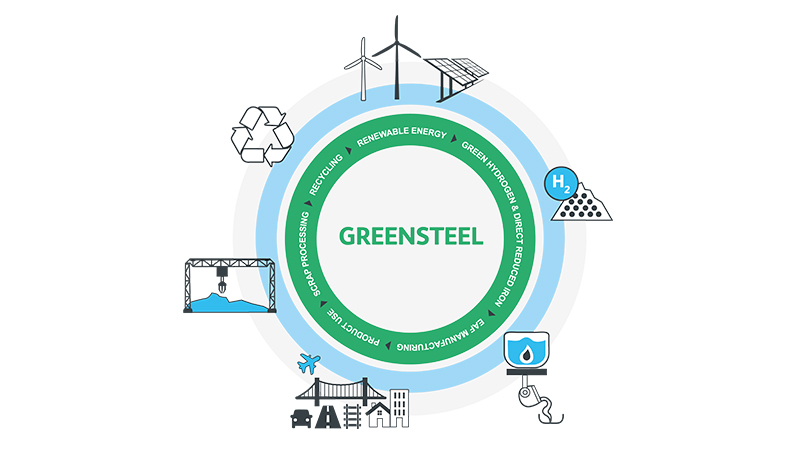India Pushes for Green Steel Amid Global Pressures
Why in the news?
India plans a green steel mission to meet global climate goals, with incentives and a procurement policy to boost sustainable practices and counter EU carbon tax impacts on imports.
Key Policy and Incentives:
- India plans to introduce a procurement policy to boost demand for ‘green steel’ and encourage sustainable manufacturing in the steel industry.
- Steel Secretary Sandeep Poundrik indicated that a green steel mission, similar to the green hydrogen mission, will be launched soon.
- Incentives for small steel producers will be considered to promote environmentally friendly practices.
Global Pressure and Industry Impact:
- The move is driven by global pressures, including the EU’s proposed carbon tax on imports like steel and aluminium.
- India’s steel sector, a key component of its industrial strength and economic growth, must align with global environmental goals.
Implementation andRecommendations:
- A steel ministry report outlines the need for both demand and supply-side initiatives to green the steel sector.
- Recommendations include developing a Green Public Procurement (GPP) policy, creating a robust MRV system for emissions, and setting up an agency for bulk procurement of green steel.
- The report also suggests collaborating with the Bureau of Energy Efficiency to develop emission measurement protocols and supporting green hydrogen projects.
What is Green Steel?
- Definition: Steel produced without fossil fuels.
- Green Hydrogen: Uses hydrogen (emitting only water) for steel production; if hydrogen is made from water and renewable electricity, it’s CO₂-free.
- Blue Hydrogen: Hydrogen made from fossil fuels with carbon capture, utilisation, and storage (CCUS) technologies; considered low carbon.
- Electric Arc Furnaces: Alternative to traditional furnaces; they use electricity to melt steel. However, if not powered by renewable sources, the steel may not be classified as green.
Key Initiatives for Promotion of Green Steel:
- Historical Emissions: Reported CO2 emissions were 95.998 million tonnes (2010), 154.678 million tonnes (2014), and 135.420 million tonnes (2016) according to MoEFCC.
- Net-Zero Commitment: Ministry of Steel aims for Net-Zero by 2070.
- Short Term (FY 2030): Focus on reducing carbon emissions through energy/resource efficiency and renewable energy.
- Medium Term (2030-2047): Emphasis on Green Hydrogen and Carbon Capture, Utilisation, and Storage.
- Long Term (2047-2070): Adoption of disruptive technological innovations for net-zero transition.
- Stakeholder Engagement: Continuous collaboration with various stakeholders.
Steps for Promoting Decarbonization in the Steel Industry:
- Steel Scrap Recycling Policy, 2019: Enhances availability of domestic scrap to reduce coal use in steelmaking.
- National Green Hydrogen Mission: MNRE’s mission includes green hydrogen production, with the steel sector as a stakeholder.
- Motor Vehicles Scrapping Rules (Sept 2021): Increases scrap availability for the steel sector.
- National Solar Mission (2010): Promotes solar energy use, aiding in emission reduction for the steel industry.
- Perform, Achieve and Trade (PAT) Scheme: Incentivizes energy efficiency improvements in the steel industry.
- Best Available Technologies (BAT): Steel sector adopts global BAT in modernization and expansion projects.
- NEDO Model Projects: Japan’s NEDO projects for energy efficiency are implemented in steel plants.
Sources Referred:
PIB, The Hindu, Indian Express, Hindustan Times





